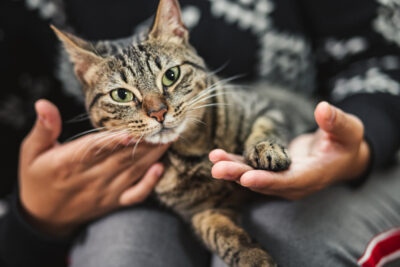
Does a Dog Read Your Emotions? | Dog Psychology
by George Barrett
There has been much media interest lately in an Austrian survey which suggested dogs could read the facial expressions on the owner’s face.
The survey involved showing dogs pictures of human faces with happy/sad/angry faces and see which ones they would respond best to. Dogs are one of the few animals (according to the survey) that can do this.

commands without looking
The conclusion was that ‘Dogs can detect different emotions purely by your facial expressions.’
For some reason the survey did not seem to explain the main reasons behind this.
I was asked by Radio Leeds to participate in a phone-in whereby different dog owners chatted about their experiences with their pets.
Some thought the dogs had saved their lives, knew their emotions and also knew a great deal of things just by word alone.
Most people explained this by thinking their dog was super intelligent and had magical powers.
To a certain extent they are right in that dogs have powers we do not.
They are very instinctive, have tremendous abilities to detect different smells, and they definitely can feel if there is an atmosphere in a room.
In a class, for instance, if one dog is aggressive/nervous/excited others can detect it and it affects the class.
Any change in the home pack structure – a divorce/separation two people getting together people arguing being upset or crying – all these things will very easily upset a dog.
My explanation of why dogs react to facial expressions is pretty clear.
From a professional point of view through experience I know that dogs learn very easily ‘by association’ so when having contact with humans from an early age they soon recognise a ‘happy’ face means reward a ‘stern’ face means scolding or rebuke.
Dogs by and large are selfish and want to get something out of what they do, either affection/attention/play/food etc.
So common sense would tell us dogs would be more attracted by ‘association’ know happy/smile is equal to reward.
This then should give every owner trainer a big clue about training their dog to do certain commands.
Your dog will learn very quickly what you approve of and disapprove of by your body language and facial expressions linked to reward or consequence.
They also respond remarkably to calmness (slow body movements and voice) and excited behaviour (fast body movements and voice) and mimic whichever you display.
Moving on to dogs understanding words, I myself often conduct tests in class asking dog owners how many words their dogs actually understand. Most are under the impression that their dogs understand the basics of sit/down/stand/spin/roll over etc (some dogs do).
There have been instances of dogs recognising dozens of different objects by name alone and bring them even when they cannot see them I personally have only had dogs that could perhaps recognise two or three very different shapes and sizes of toys.
The vast majority of pet dogs cannot do the very simple commands done in a different context and especially when out of sight of the handler.
So for instance asking a dog to sit, then go down, then stand, most reasonably trained dogs will respond.
But ask the dog to go down first and then sit with no hand gestures completely confuses them and you have to really practise to make it happen.
So this then makes you question whether they actually are responding to a learnt word.
I do a test (have a go yourself) whereby the handler asks the dog to stay then sits behind a board (see photo) out of the dogs’ sight and then asks for simple changes in position or a party trick like spin or rollover, 90 per cent of dogs will not do it.

Why is this? Because the handler, without realising it, is making subtle movements: raising an eyebrow, bending over, pointing etc.
The dog is then using this cue to anticipate the next command. Without the prompts the dog will not respond.
I take this one step further to demonstrate the opposite (dogs take most notice of body language and gestures) by writing on some cards sit/down/stand.(see photo).
Then using the same gestures, holding the different cards and not saying a word, virtually every dog will respond quickly provided it has been trained to the hand movements(this is a great party trick).
One lady got an iPad and wrote ‘sit’ on it then did the ‘sit’ hand gesture with her dog, at the same time keeping the device in my hand .
It got a massive clap and one woman said to me: “What a clever dog she is I did not realise dogs had such good eyesight to read such small print.”
It was a bit of a disappointment when I told her how it was really done.
There are even more surveys at the moment testing dogs on detecting certain cancers and the early stages of epileptic seizures. Many are now doing this as service dogs.
There are always more questions than answers with the whole dog/human relationship thing. To me and many more dog lovers it is a fascinating subject.




